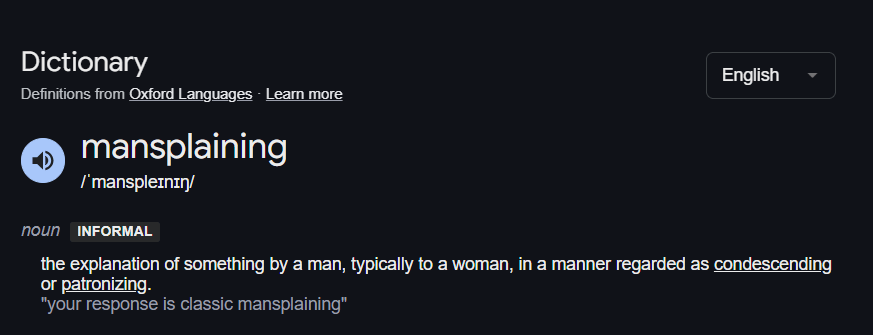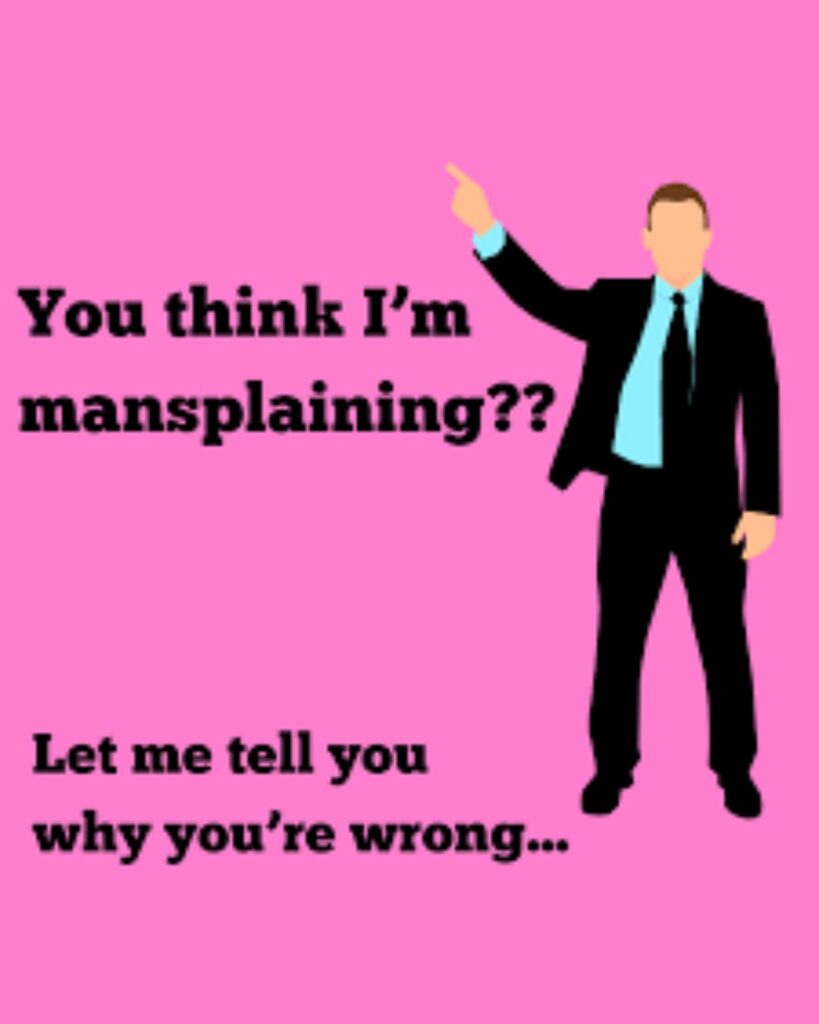Been Mansplained To? You're Not Alone
Have you ever found yourself in a situation where your male colleague or a friend started giving you a piece of advice…uninvited advice? Times when you did something correctly but a man makes unnecessary remarks for the job that you’ve done… correctly?
Well, my friend, you’ve been a victim of mansplaining.

This term gained prominence in Rebbecca Solnit’s essay, “Men Explain Things To Me”, 2008, which describes a condescending, patronizing male behaviour of explaining things to women, even when they already know the topic. In her essay, she remembers how once a man explained to her the book which she had written not knowing she was the author. This term was not coined in her essay but the idea struck and this led to the birth of the term ‘mansplaining’ and further gained importance online, in feminist and pop-cultural discourse.
Understanding Mansplaining
Men assuming that women are ill-informed about a topic and then explaining it to them when not asked is where this concept revolves. This phenomenon is not limited to daily-life conversations but extends beyond into professional settings, media discussions and even policymaking. At its core, mansplaining is not just about explaining—it is about the dynamics of who is explaining and the presumptions underlying that explanation. It involves:
Unsolicited advice: A man offers advice and insights when they are not needed and most importantly not asked.
Dismissal of women’s knowledge: A woman’s knowledge, expertise, or mastery of a subject is ignored or undermined.
Condescending Tone: The explanation is given in a way that suggests that women are ignorant or incapable of understanding.

Mansplaining in Different Contexts
In workplace:
Women face mansplaining a lot in their workplace. Men colleagues restate their opinions in a meeting as if offering a fresh perspective. Other times not taking into consideration the remarks made by a woman. Female scientists, journalists, and executives frequently report being lectured about their own areas of expertise, diminishing their credibility and contributions.
Pop culture and media:
Interviews with female celebrities, authors, and academics frequently showcase mansplaining. Male interviewers often interrupt women to explain their own work to them. Social media platforms also become battlegrounds for mansplaining, with men offering unsolicited corrections to women on topics ranging from literature to science.
In everyday interactions:
From discussions on politics to explaining basic driving techniques, everyday conversations often reveal subtle but pervasive forms of mansplaining. Women sharing personal experiences on social media are sometimes met with men telling them why their perceptions are incorrect or “not how things actually work.”
The Psychological and Social Impact:
Mansplaining is more than just an annoyance—it has real and deeper consequences. Over time, repeated exposure can lead to:
- Erosion of Confidence: Women may second-guess their own knowledge and hesitate to voice their thoughts and opinions.
- Workplace Inequality: It can contribute to the “imposter syndrome” and hinder career growth when women’s expertise is persistently undermined.
- Strained Communication: It fosters frustration and resentment, making effective dialogue more difficult between genders.
- Cultural Reinforcement of Gender Bias: It perpetuates the stereotype that women are less knowledgeable or capable, reinforcing systemic inequality.
Mansplaining: Pattern vs. Isolated Incidents
At times, there is a counterargument while speaking against mansplaining, “maybe he was just being helpful. Why assume it’s sexism?” Which brings us to the pattern vs isolated incidents. Is he just like that or is he a renowned mansplainer?
Isolated incident
An isolated incident of a man explaining something to a woman in a condescending way could be due to:
- Lack of social awareness
- Personality traits (e.g., someone who explains things to everyone, regardless of gender)
- A misunderstanding about the woman’s expertise
For example, He is explaining how to use a smartphone to a woman who is a tech expert, but he explains it to men as well.
In this case, the issue may be general arrogance rather than gender bias.
Recurring pattern
Mansplaining becomes a pattern when:
- Women consistently experience it more than men.
- It happens regardless of a woman’s expertise (even in fields where she’s the expert).
- It’s accompanied by gendered assumptions (e.g., assuming women know less about politics, finance, science, or driving).
For example, A male coworker repeatedly interrupts and restates a woman’s ideas in meetings, but does not do the same to male colleagues.
On social media, men routinely “correct” women on topics they are experts in, like literature, history, or law, often without knowing their credentials.
Why Does Mansplaining Happen?
Several factors contribute to mansplaining:
- Social Conditioning: From childhood, boys are often encouraged to be assertive, while girls are conditioned to be accommodating. This dynamic carries into adulthood, influencing communication styles. Many men do not try to change this narrative and continue to be ignorant.
- Implicit Bias: Many men may not consciously intend to be condescending but are influenced by ingrained biases about gender and knowledge.
- Power and Privilege: In male-dominated spaces, men may feel entitled to assume a position of authority, even in matters they know little about. This can be seen in professions like engineering, piloting, firefighting and certain areas of technology and finance.
- Lack of Awareness: Some men do not realize they are mansplaining, seeing their behaviour as helpful rather than patronizing.
How to Combat Mansplaining:
For Women
Assert Boundaries: If someone is explaining something unnecessarily, a simple “I already know this” or “I actually specialize in this field” can help shut it down.
Ask Questions: A well-placed “Why do you assume I don’t know this?” can make the mansplainer reconsider their approach.
Support Each Other: In professional settings, women can amplify each other’s voices, ensuring their contributions are acknowledged and not restated by men for credit.
For Men
Practice Active Listening: Before explaining something, ask yourself if the person might already know it.
Acknowledge Expertise: Instead of assuming ignorance, ask about the other person’s knowledge on the topic first.
Reflect on Behavior: If called out for mansplaining, consider the feedback rather than dismissing it as an overreaction.
Conclusion
Mansplaining is a symptom of deeper societal gender biases that require collective awareness and effort to dismantle. Recognizing and addressing it is not about vilifying men but fostering mutual respect in conversations. When men and women engage in dialogues that are based on equality rather than assumption, it creates space for meaningful, constructive exchanges—benefiting everyone involved. Ultimately, the goal is not just to stop mansplaining but to build a culture where knowledge-sharing is a two-way street, free from condescension and full of genuine respect.
Thanks for reading, fr! Share if you like it enough. Follow us on Instagram & LinkedIn for more.


